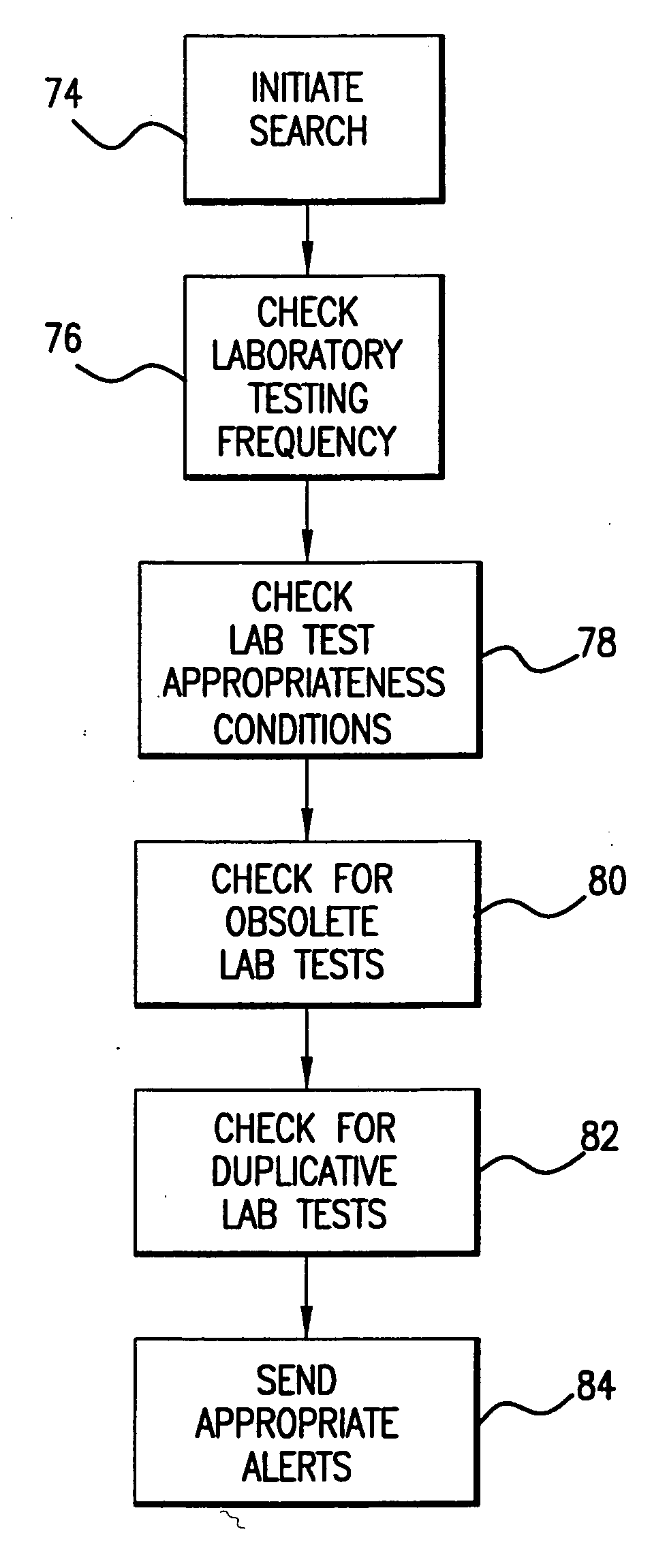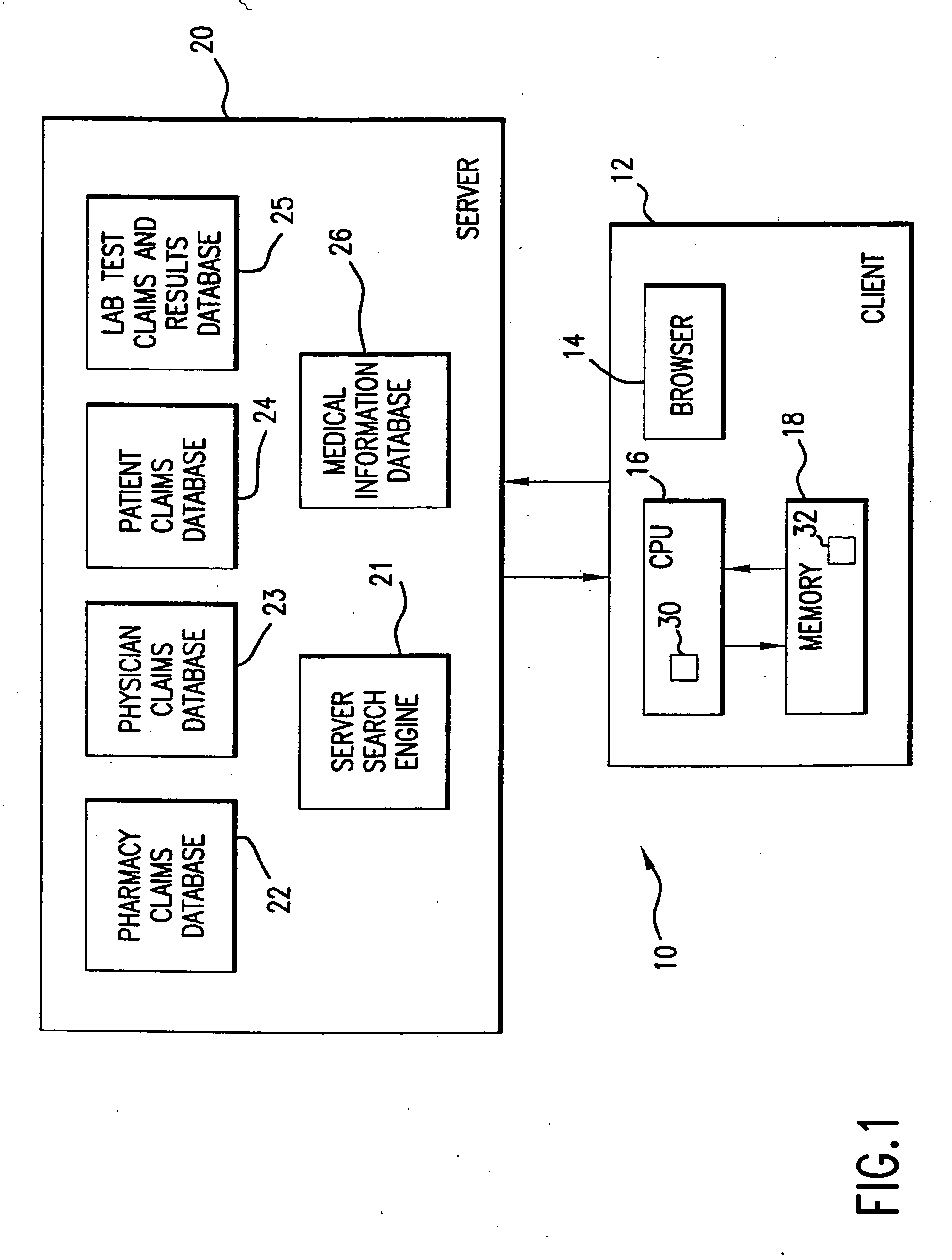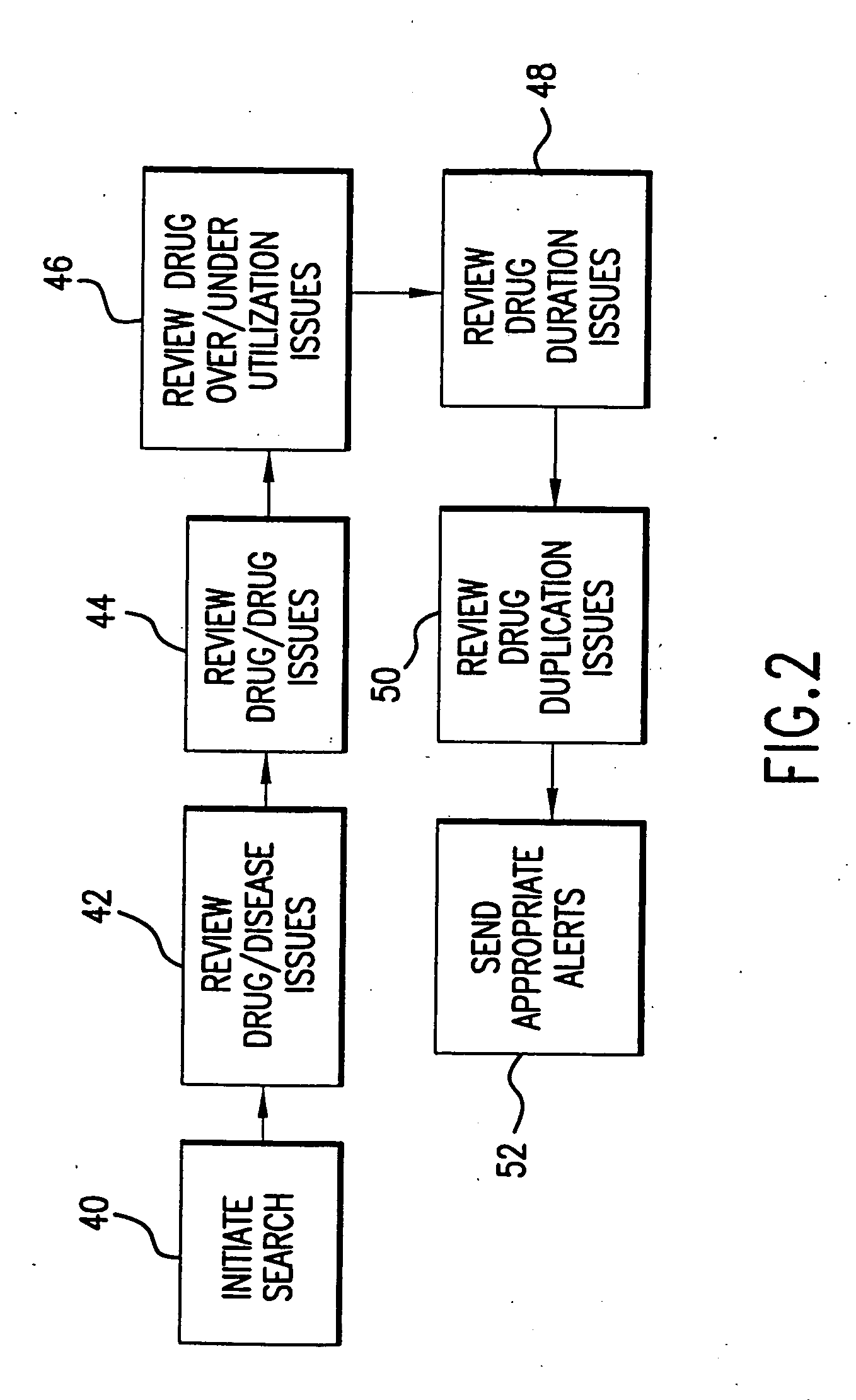System for monitoring regulation of pharmaceuticals from data structure of medical and laboratory records
a technology of data structure and monitoring system, applied in the field of system for monitoring the regulation of pharmaceuticals from data structure of medical and laboratory records, can solve problems such as the inability to improve the patient's disease, and achieve the effect of increasing the specificity of the predictive nature of the system, increasing the system and logic, and increasing the specificity of the system
- Summary
- Abstract
- Description
- Claims
- Application Information
AI Technical Summary
Benefits of technology
Problems solved by technology
Method used
Image
Examples
example i
Monitor Drug Initiation
[0080] Database search indicates that PATIENT1 has been prescribed DRUG A, i.e., (DRUG A>1). Detection of initiation of DRUG A causes monitoring for a report from LAB1 within X days after initiation of DRUG A for duration period of Z days. An alert is provided to the user if LAB1 indicates that no test has been run during the current period after initiation (i.e., within X days of Z duration). Monitoring of lab testing after initiation of treatment with DRUG A provides information regarding level of DRUG A in patient and effectiveness of DRUG A as treatment.
[0081] Examples of such a search routine would include: (1) initiation of amiodarone (DRUG A) requires monitoring for a lab test for thyroid stimulating hormone (TSH) every 180 days; (2) initiation of lovastatin (DRUG A) requires monitoring for a liver function lab test (LFT) every 6 weeks for 2 such periods, or 12 weeks total; (3) initiation of metformin (DRUG A) requires monitoring for a lab test for cr...
example ii
Monitor Drug Frequency
[0082] Database search indicates that PATIENT1 has been provided two treatment phases of DRUG A (DRUG A>2). Detection of start of second treatment phase of DRUG A causes monitoring for report from LAB1 every X days for duration period of Z days. An alert is provided to the user if LAB1 indicates that it has not run at least one test during each period of X days for duration period of Z days, or an alert is provided to the user about the effectiveness of DRUG A for a second treatment phase for the disease indicated in the record. Monitoring of lab information regarding further treatment phases provides information about effectiveness of DRUG A as a treatment.
[0083] Examples of such a search routine would include: (1) maintenance treatment with amiodarone (DRUG A) requires monitoring for a liver function lab test (LFT) every 180 days; (2) maintenance treatment with simvastatin (DRUG A) requires monitoring for a liver function lab test (LFT) every 180 days; (3) ...
example iii
Monitor Drug Dosage Changes
[0084] Database search indicates that PATIENT1 has been provided with a change in dosage level of greater than 50% of the previous dose of DRUG A ((DRUG A>2) AND (DOSE(NEW)>DOSE(PREV)×1.5). Detection of change in dosage level of DRUG A causes monitoring for report from LAB1 every X days for duration period of Z days. An alert is provided to the user if LAB1 indicates that it has not run at least one test during the period of X days for duration period of Z days, or an alert is provided about the level of dosage of DRUG A in the patient and the effectiveness of particular dosage levels of DRUG A for the treatment of the indicated disease.
[0085] Examples of such a search routine would include: (1) changing dosage of theophylline (DRUG A) requires monitoring for lab test for theophylline blood level after 5 half lives (t½ 3 to 15 hours); (2) changing dosage of digoxin (DRUG A) requires monitoring for lab test for digoxin blood level after 5 half lives lives...
PUM
 Login to View More
Login to View More Abstract
Description
Claims
Application Information
 Login to View More
Login to View More - R&D
- Intellectual Property
- Life Sciences
- Materials
- Tech Scout
- Unparalleled Data Quality
- Higher Quality Content
- 60% Fewer Hallucinations
Browse by: Latest US Patents, China's latest patents, Technical Efficacy Thesaurus, Application Domain, Technology Topic, Popular Technical Reports.
© 2025 PatSnap. All rights reserved.Legal|Privacy policy|Modern Slavery Act Transparency Statement|Sitemap|About US| Contact US: help@patsnap.com



